An eating disorder is a mental illness that goes beyond food and diet. It encompasses distorted thoughts and behaviours towards food, weight, as well as body image. In other words, it is a psychiatric disorder that can cause medical and nutritional complications.
According to Statistics Canada (2016), approximately one million, or three percent, of Canadians are living with an eating disorder. Living with an eating disorder is physically and mentally exhausting. Furthermore, it can be difficult for an individual to accept that they may be living with one.
According to Statistics Canada (2016), approximately one million, or three percent, of Canadians are living with an eating disorder.
What Causes an Eating Disorder?
Multiple factors can contribute to the development of an eating disorder such as media, family environment, socio-cultural values, and personality traits. There is no singular “recipe” that leads to someone developing an eating disorder. A variety of circumstances may lead to the development of an eating disorder.
What are the Different Types of Eating Disorders?
It’s important to note that harmful eating behaviours occur on a continuum. They can range from behaviours as simple as going on and off occasional diets, to more extreme behaviours such as restricting fat, calories, or certain foods/nutrients from the diet.
It is also important to recognize that some disordered eating behaviours, although harmful, are not recognized by the Diagnostic and Statistical Manual of Mental Disorders, Fifth Edition (DSM-5) as clinical eating disorders. We refer to these behaviours as “subclinical eating disorders”. Both clinical and subclinical eating disorders can be harmful. In this blog, we will discuss clinical eating disorders. However, it is possible for an individual with a subclinical eating disorder to have many of the symptoms seen in clinical eating disorders.
Anorexia Nervosa and Bulimia Nervosa are the two most commonly diagnosed eating disorders based on the DSM-5. There are many others that exist as well including Binge Eating Disorder, Avoidant Restrictive Intake Disorder (ARFID) and Other Specified Feeding or Eating Disorder (OSFED).
Anorexia Nervosa
Anorexia nervosa is often distinguished by extreme restriction, leading to nutrient deficiencies within the body and low body weight.
Bulimia Nervosa
Bulimia nervosa is characterized by repeated occurrences of eating, followed by activities to prevent weight gain such as fasting, diuretics, self-induced vomiting, or excessive exercise.
Binge Eating Disorder
Binge eating disorder exists when an individual experiences a loss of control while eating an amount of food that would be in larger quantities than most people would eat in similar circumstances and a similar timeframe.
ARFID
ARFID is an eating disorder where folks consume only specific types of food. Folks may avoid foods because they aren’t interested in eating, they have a sensitivity to certain foods because of the characteristics of the food, or they had a bad experience with food(s) and will not eat it/them now. Unlike a “picky eater”, someone living with ARFID does not consume enough calories to maintain body function.
Eating Disorders and Weight
The media often portrays folks living with eating disorders as living in smaller bodies. However, not all folks living with eating disorders will be living in smaller bodies. It is important to recognize that eating disorders can impact folks of all different weights, shapes and sizes. It is also important to note that eating disorders that exist at a young age may cause severe impairment in development and growth, as well as overall mental and social well-being.
Signs of an Eating Disorder
It is important to understand some of the common physical, physiological, and behavioural signs:
Physical Warning Signs:
- Accelerated loss in weight
- Loss or infrequent menstruation in females
- Decreased energy levels
- Irregular sleeping patterns
- Signs of potential damage due to vomiting (such as swelling of the cheeks or jaws, or corrosion of the teeth)

Psychological Warning Signs:
- Unhealthy body image
- Restricting food as self-punishment
- Experiencing anxiety or irritableness during mealtimes
Behavioural Warning Signs:
- Dieting behaviour (for example, counting calories, fasting, or avoiding macronutrients such as fats or carbohydrates)
- Eating alone and avoiding group meals
- Evidence of behaviours of binge eating
- Evidence of behaviours to prevent weight loss (such as laxatives, self-induced vomiting, or excessive exercise)
- High sensitivity to comments regarding body image, eating, weight, and exercise
Do I Have an Eating Disorder?
If you feel you have one or more of the signs and symptoms listed above, we encourage you to seek help immediately. If you feel you may have an eating disorder, we can help curate an individualized treatment plan that can meet your needs and help you heal.
How to Get Help for an Eating Disorder
Tell someone you trust about your struggles. Accept support from your loved ones. This is not something you need to go through alone. The next step is to see your family physician and share what you have been experiencing. If they do not suggest it first, request a referral to a local eating disorders program.
Sometimes individuals may not meet the admittance criteria for a program. This does NOT mean you don’t need or deserve help. In these cases, look for a private practice therapist and dietitian to help support you in your journey to recovery.
Eating Disorder Recovery at Change Creates Change
Change Creates Change is here to support folks in their recovery. Book a free consultation call below to learn more about how we can help.

